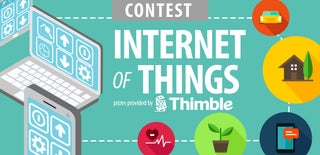Introduction: Bluetooth Fan Speed Controller
Have you ever got all nice and comfy in your seat, wrapped in blankets ready to watch Netflix, only to realise you left the fan on? Turn the fan on a warm night only to be awoken by freezing wind circulating your bedroom? If you're like me and have these problems a lot, then maybe you should make this:
a Bluetooth Fan Speed Controller
It's super simple to use - just connect to it with your phone and then you can turn the fan speed dial from... wherever!
This project combines 3D printing, IOT, Arduino, Coding and all the cool technologies you could think of!
(although it doesn't use any kind of RGB lighting sadly...)
Don't forget to go to that ribbon above and vote for this instructable in the 3D printing, Internet of Things, and Automation contests. THANKS!
Step 1: Watch the Video
As with most of my instructables, it is best to watch the full video to see how it is made (if you don't like reading) and what it will look like in action. Watch it embedded above or through this link.
Step 2: Supplies
- For this project you will need:
- Arduino Nano
- Worm Drive right anghle gearbox DC motor set (Item used)
- H-Bridges DC Motor Controller (Item used)
- Battery Pack (Item used)
- Wires
- Acrylic Sheet
- 3D printed connector (next step of instructable)
- Bluetooth Module:
- BLE module for IOS (e.g HM-10)
- Bluetooth 3.0 for Android (e.g. HC-06)
Tools:
- Belt Sander
- Drill
- Soldering Iron
- 3D printer
- Hot Glue
Step 3: 3D Printing
The main premise of this design revolves around the motor being connected to the fan speed dial. The way I achieved this connection was with a really simple little 3d printed connector.
You can grab the STL file for the model here: STL IPT.
After printing, I needed to sand some of the inside out to allow it to fit nicely and I also had to drill out a bigger hole for the motor because it is different to what motor I thought I would use.
Step 4: Acrylic Plate
The acrylic plate is the board that everything sits on to make it look nice.
You can download the template that I drew up for mine here: PDFDWF.
It utilises both sides to be extra small and has adequate space for all the items I linked on the 'supplies' step.
The template has everything marked on it and is drawn to scale (at least it is in AutoCAD). If you are using different components to what I used, your template will most likely be different.
So cut out the template and mark the outline onto an acrylic sheet. Then just follow the lines and you should get something looking like the photo above (I went slightly longer on the big inside circle because I wanted a nice curve which was hard to do with the method I used). I also buffed the edges of the plate so make them super smooth!
Step 5: Building It All
Download the schematic and fritzing diagram here to see how the circuit for this works (also embedded above).
I decided to wire up the circuit afterglueing everything on, so that I could accurately measure the wires and reduce the amount of them if they were unneeded. Make sure to utilise the wire hole when wires need to cross between the two sides of the acrylic plate.
After it is all built and working - upload the code that can be found here: Mirror 1Mirror 2.
Step 6: App Configuration
The configuration for the app is simple. Download the "Bluetuino" app (IOS only atm).
Make a button labelled 'small spin' or something similar.
This will move the dial for 500ms (1/2 s). Set the code to: '887425'
then just make another button labelled 'big spin' or something similar.
This will move the dial for 1000ms (1s). Set this button's code to: '887426'
FOR ANDROID USERS
The way Bluetuino works is that it sends a 'code' with a line ending (/n) to activate certain functions. These are labeled in the code. I would not be surpsired if there was an app that does the exact same thing. I however do not own any android devices so I cannot help. If you find an app that works: please post it to the comments below and I will update it here. Thanks!
Thanks to YashM29 in the comments for suggesting the app, 'Bluetooth Electronics' - available for free on the google play store. Note: This app cannot be used with Bluetooth Low Energy (BLE) modules.

Participated in the
3D Printing Contest 2016

Participated in the
Automation Contest 2016

Participated in the
Internet of Things Contest 2016













